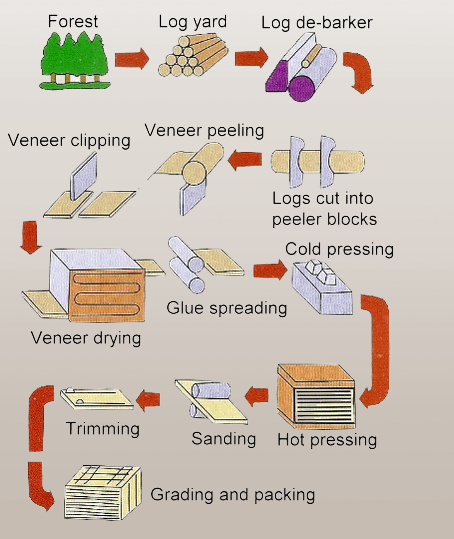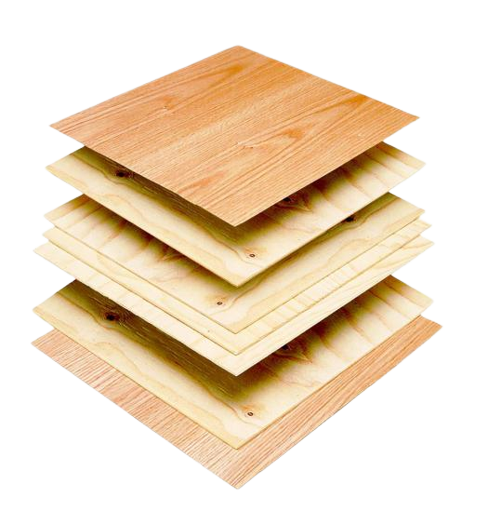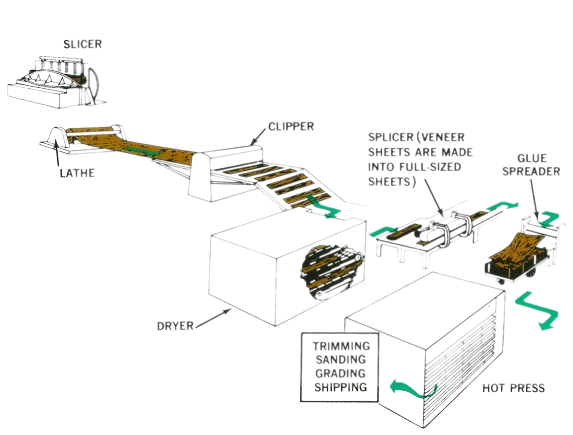Plywood History & Manufacturing Process

Plywood is a widely used building material made from thin layers of wood veneer bonded together to create a strong and durable sheet. The history and process of making plywood are both interesting and important to understand its significance in construction and various other applications.

History:
- Ancient Origins: Plywood has a long history dating back to ancient Egypt, where wooden boards were glued together to form stronger and more stable surfaces for furniture and construction. Early examples of laminated wood products similar to plywood have also been found in China and Greece.
- Industrial Revolution: The development of modern plywood began in the 19th century, and the Industrial Revolution played a crucial role in advancing its production. In the United States, Isaac Smith is often credited with inventing the first rotary lathe for veneer production in the mid-19th century.
- Early Production: The early plywood production methods involved cutting or peeling thin sheets of wood from logs and then gluing them together with adhesive. This made plywood more cost-effective and versatile compared to solid wood.
- World War II: Plywood gained significant popularity during World War II, as it was used extensively in military applications such as aircraft construction and military vehicles.
Modern Plywood Manufacturing Process:
The modern plywood manufacturing process is highly mechanized and involves several steps:
- Log Selection: Logs are carefully selected for their wood quality, with species like birch, oak, and pine being commonly used. The logs are debarked and cut into manageable lengths.
- Peeling or Slicing: The logs are either rotary-cut or sliced into thin sheets, known as veneers, which are typically around 1/40 to 1/50 of an inch thick. Rotary-cutting involves rotating the log against a blade, producing continuous long sheets, while slicing involves cutting the log into veneers like you would cut slices of bread.

- Drying: The veneers are dried to reduce their moisture content to an appropriate level to prevent warping and improve adhesive bonding.
- Gluing: The dried veneers are coated with adhesive, commonly phenol-formaldehyde or urea-formaldehyde resins. These adhesives are chosen for their durability, water resistance, and strength. The veneers are then stacked with their grains at right angles to one another to improve the plywood’s strength and stability.
- Pressing: The glued veneers are stacked together to create a panel. This panel is then subjected to high pressure and heat in a hydraulic press. The pressure and heat cure the adhesive and bond the veneers into a solid and rigid sheet of plywood.
- Trimming and Inspection: After pressing, the plywood sheets are trimmed to size and inspected for defects. Any sheets with imperfections are removed.
- Finishing: The finished plywood sheets can be sanded, finished with coatings, or left as is, depending on their intended use.
Plywood is available in various grades, with higher grades featuring fewer defects and a smoother finish. It is used in a wide range of applications, including furniture, cabinetry, flooring, roofing, walls, and more, due to its strength, durability, and versatility. Its history and production process highlight the evolution of a fundamental building material that continues to be an integral part of construction and design.
